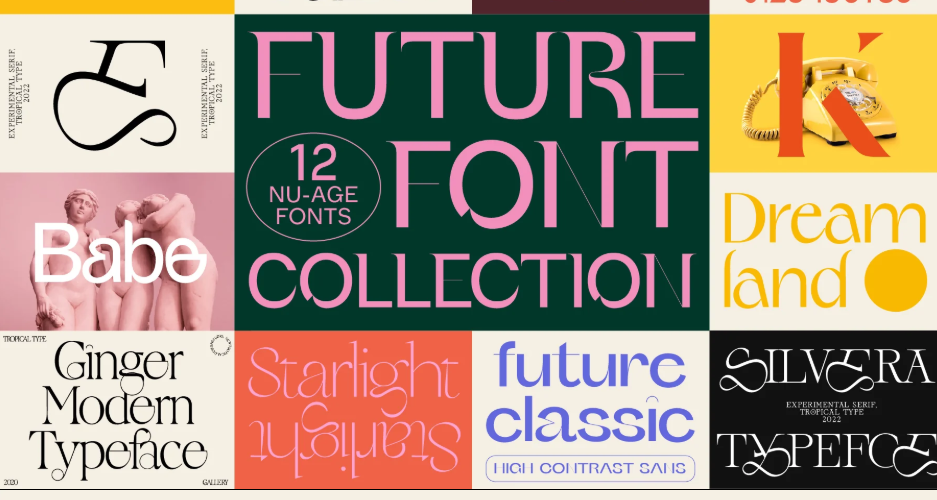Typography is more than just choosing a font—it’s about creating an emotional connection, enhancing readability, and shaping the future of visual communication. As we move further into the digital age, the question arises: What is the good future font? In this article, we’ll explore the characteristics of a good future font, the trends shaping typography, and how designers can stay ahead in a rapidly evolving landscape.
Contents
What Is the Good Future Font?

“What is the good future font?“ It’s a typeface that balances innovation, functionality, and aesthetics. It’s not just about looking modern; it’s about adapting to the needs of users, technology, and design trends. A good future font should:
- Be Versatile: It should work across various platforms, from print to digital, and adapt to different screen sizes and resolutions.
- Prioritize Readability: A future font must be easy to read, ensuring accessibility for all users, including those with visual impairments.
- Reflect Modern Aesthetics: It should align with contemporary design trends while remaining timeless enough to avoid quick obsolescence.
- Support Multilingual and Inclusive Design: As the world becomes more connected, a good future font should accommodate diverse languages and scripts.
- Leverage Technology: It should take advantage of advancements like variable fonts, AI-generated designs, and responsive typography.
Key Trends Shaping the Future of Fonts
To understand what is the good future font, let’s look at the trends that are shaping typography in 2025 and beyond:
1. Variable Fonts
Variable fonts are revolutionizing typography by allowing a single font file to adjust weight, width, and other attributes dynamically. This flexibility makes them ideal for responsive web design and reduces load times, enhancing user experience.
2. 3D and Immersive Typography
With the rise of AR/VR and 3D design tools, fonts are becoming more interactive and immersive. A good future font might include 3D elements or animations that respond to user interactions.
3. Sustainability-Inspired Fonts
As sustainability becomes a global priority, fonts inspired by nature and eco-friendly themes are gaining traction. These fonts often feature organic shapes and earthy tones, reflecting a commitment to environmental consciousness.
4. AI-Generated Typography
Artificial intelligence is playing a significant role in creating custom and experimental typefaces. AI tools can generate unique fonts that push the boundaries of traditional design, making them a key component of the good future font.
5. Inclusive and Accessible Design
A good future font must prioritize inclusivity. This means designing typefaces that are easy to read for people with disabilities and supporting a wide range of languages and scripts.
Characteristics of a Good Future Font
When evaluating what is the good future font, consider the following characteristics:
1. Adaptability
A future font should be adaptable to different contexts, from mobile screens to large-scale billboards. Variable fonts excel in this area, offering unparalleled flexibility.
2. Timelessness
While trends come and go, a good future font should have a timeless quality that ensures it remains relevant for years to come.
3. Innovation
Innovation is at the heart of the good future font. Whether it’s through AI-generated designs or immersive 3D effects, a future font should push the boundaries of what’s possible.
4. Accessibility
Accessibility is non-negotiable. A good future font must be easy to read and accessible to all users, regardless of their abilities or language.
5. Cultural Relevance
As the world becomes more interconnected, a good future font should reflect diverse cultures and traditions, making it relevant on a global scale.
Examples of Good Future Fonts
Here are some examples of fonts that embody the characteristics of what is the good future font:
- Helvetica Now: A modern update to the classic Helvetica, this font offers improved readability and versatility.
- Variable Fonts like Roboto Flex: These fonts allow designers to adjust weight, width, and other attributes dynamically.
- GT Super: A serif font with a contemporary twist, GT Super combines elegance with modern functionality.
- Neue Haas Grotesk: A reimagined version of the classic Helvetica, this font is both timeless and innovative.
How to Choose the Right Future Font for Your Project
When selecting what is the good future font for your project, consider the following steps:
- Define Your Goals: What message do you want to convey? Your font choice should align with your brand’s identity and objectives.
- Test for Readability: Ensure the font is easy to read across different devices and platforms.
- Consider Accessibility: Choose a font that supports inclusivity and accessibility.
- Stay Updated on Trends: Keep an eye on emerging trends in typography to ensure your font choice feels fresh and modern.
- Experiment with Variable Fonts: Take advantage of the flexibility offered by variable fonts to create dynamic and responsive designs.
Conclusion: What Is the Good Future Font?
The good future font is one that combines innovation, functionality, and aesthetics to meet the needs of modern design. As technology continues to evolve, so too will typography, offering new opportunities for creativity and expression. By staying informed about trends and prioritizing adaptability, readability, and inclusivity, designers can ensure their font choices remain relevant and impactful in the years to come.
So, what is the good future font? It’s a font that not only looks good but also works hard to connect, communicate, and inspire in an ever-changing world.
